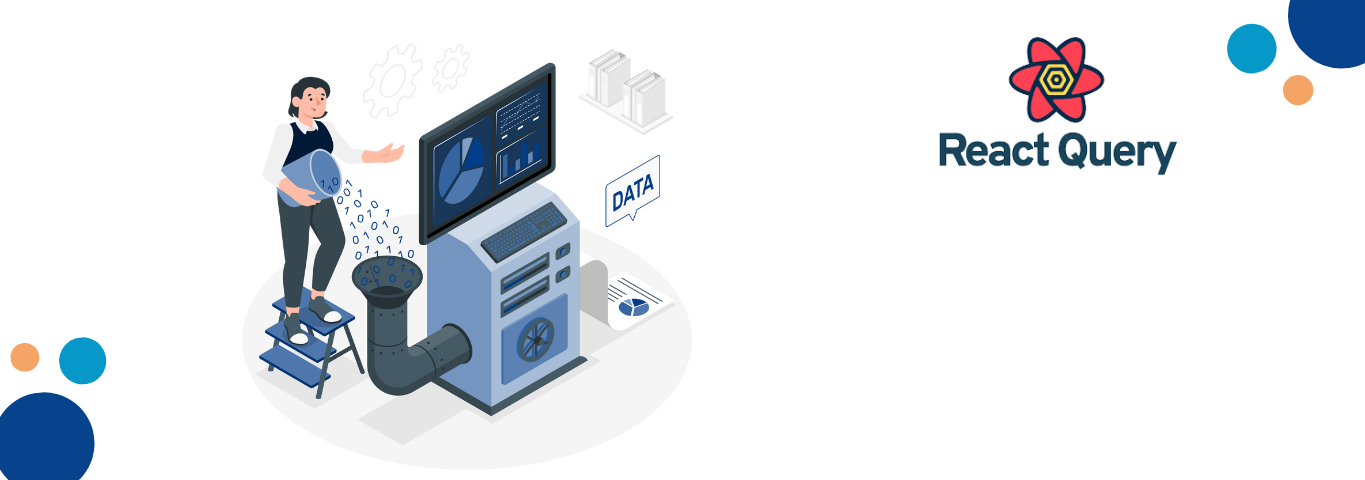React Query 4 is a powerful library that simplifies data fetching and state management in React applications. It provides an intuitive and declarative approach to handling remote data, caching, and synchronizing data between components. This blog will explore the key features and benefits of React Query 4 and how it can streamline data management in your React projects.
What is React Query 4?
React Query 4 is designed to solve the challenges associated with data fetching and state management in React applications. It abstracts away the complexities of asynchronous data handling and provides a unified API for managing data from various sources, such as REST APIs, GraphQL endpoints, or even local storage.
One of the core concepts of React Query 4 is the concept of queries. Queries represent remote data fetching operations and are defined using a declarative syntax. React Query 4 caches the query results and automatically handles data refetching and invalidation based on configurable rules.
Another powerful feature of React Query 4 is mutations. Mutations simplify data modification by providing a convenient API for making HTTP requests and handling the state changes that come with it. React Query 4 ensures data consistency by automatically updating query results after a mutation is performed.
What are the benefits of React Query 4?
- Simplified Data Fetching: React Query 4 eliminates the need to write complex data fetching logic manually. With its intuitive query syntax and built-in caching mechanism, developers can effortlessly fetch and manage data from various sources. Through intelligent caching strategies, react Query 4 also optimizes network requests by reducing redundant fetches.
- Automatic Data Synchronization: React Query 4 handles data synchronization between components seamlessly. When multiple components query the same data, React Query 4 ensures they receive consistent and up-to-date data by utilizing a shared cache. This avoids unnecessary duplicate requests and provides a smooth and synchronized user experience.
- Error Handling and Retry Logic: React Query 4 simplifies error handling by providing convenient mechanisms to handle common error scenarios. It supports automatic retries, configurable error notifications, and global error boundaries, making handling and recovering from network failures or temporary issues easier.
- Optimistic Updates: React Query 4 empowers developers to provide a smooth and responsive user experience by supporting optimistic updates. It allows UI updates to be immediately reflected in the user interface before receiving the server response. If the server response differs from the optimistic update, React Query 4 automatically handles the state synchronization to reflect the actual server data.
What are the best practices and considerations of React Query 4?
When using React Query 4, following some best practices is essential. First, carefully plan and organize your queries to ensure efficient data fetching and minimize unnecessary requests. Utilize features like query invalidation and refetching strategically to keep your data fresh and up to date.
It is also crucial to understand the caching mechanisms provided by React Query 4. Configure cache policies based on your specific use cases and data requirements. Use query keys to offer granular control over caching and avoid unnecessary data duplication.
While React Query 4 simplifies data management, evaluating the libraries compatibility with your existing stack and potential conflicts with other state management solutions is essential. Thoroughly test and validate its integration with your project before adopting it extensively.
Overall, React Query 4 is a game-changer in simplifying data fetching and state management in React applications. With its intuitive API, built-in caching, and seamless data synchronization, React Query 4 empowers developers to build efficient, responsive, and scalable applications.
By leveraging React Query 4, developers can eliminate the need for writing complex data-fetching logic and focus more on building exceptional user experiences. Its automatic caching mechanism optimizes network requests and reduces redundant fetches, improving performance and reducing data usage.
Furthermore, React Query 4 error handling capabilities, including automatic retries and configurable error notifications, help developers easily handle common error scenarios, ensuring a more robust application.
The optimistic updates feature of React Query 4 allows for a smoother and more responsive user experience by reflecting UI changes immediately and seamlessly synchronizing with server responses.
Conclusion
React Query 4 simplifies data fetching, caching, and state management in React applications, allowing developers to focus on building feature-rich applications while benefiting from improved performance, data consistency, and a more delightful user experience. Consider integrating React Query 4 into your React projects to simplify and enhance your data management capabilities.







Comments